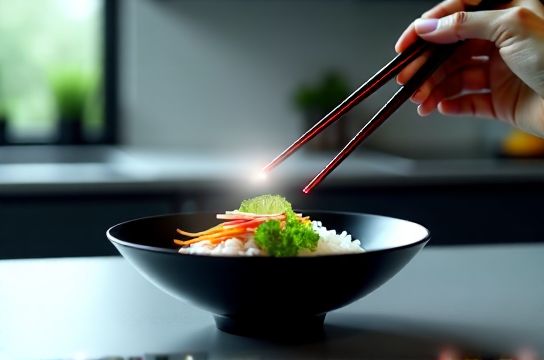Talking Chopsticks That Scold You for Eating Too Fast
- 时间:
- 浏览:31
- 来源:OrientDeck
Imagine this: you're digging into a steaming bowl of ramen, slurping with joy—suddenly, your chopsticks chirp at you like an annoyed robot nanny. 'Slow down! Chew properly!' Sounds like sci-fi? Nope. Welcome to the world of smart dining—where even your cutlery judges your eating habits.

Enter the Talking Chopsticks—a quirky yet surprisingly effective Japanese invention designed to combat one of Asia’s biggest health concerns: eating too fast. These aren’t your average bamboo sticks. Packed with sensors and voice feedback, they’re part of a broader wellness trend promoting mindful eating.
Why Should You Care About Eating Speed?
Fast eaters, listen up (and chew slowly). Studies show that gobbling food increases risks of obesity, indigestion, and even type 2 diabetes. The body takes about 20 minutes to signal fullness to the brain. Eat faster than that? Congrats—you’ve likely overeaten before your brain even caught up.
In Japan, where these chopsticks were developed by a collaboration between startups and health researchers, nearly 30% of adults are classified as fast eaters. That’s why innovations like talking chopsticks aren’t just gimmicks—they’re public health tools.
How Do Talking Chopsticks Work?
These high-tech chopsticks use motion sensors and AI algorithms to track how often you lift food to your mouth. If you’re taking more than a set number of bites per minute (usually around 15–20), they’ll politely—or not so politely—remind you to slow down.
Some models even sync with smartphone apps, offering real-time feedback and weekly reports on your eating behavior. Think of it as a Fitbit for your meals.
Features That Make Them Stand Out
| Feature | Description |
|---|---|
| Voice Feedback | Pre-recorded messages in multiple languages (e.g., 'Take a breath!', 'Enjoy your meal!') |
| Bite Tracking | Uses accelerometer to detect lifting motions |
| App Integration | Bluetooth sync with iOS/Android for progress tracking |
| Battery Life | Up to 8 hours on a single charge |
| Price Range | $70–$120 depending on model and features |
Who’s Using Them?
While initially marketed to health-conscious individuals and parents worried about kids scarfing down dinner, these chopsticks have found fans in unexpected places. Some Japanese schools have piloted them in cafeterias to teach students healthy habits. Others use them for post-surgery recovery or managing conditions like acid reflux.
And yes—there’s a humor factor. Videos of people getting scolded by their chopsticks have gone viral on TikTok and YouTube, making them a fun conversation starter at dinner parties.
The Bigger Picture: Tech Meets Wellness
The rise of smart utensils reflects a growing global shift toward preventive healthcare. Instead of waiting for problems to arise, people want tools that help them build better habits—quietly, daily, bite by bite.
Are they perfect? Not quite. Some users report the voice alerts can be annoying, and they’re definitely not ideal for noisy restaurants. But as a tool for self-awareness? They’re surprisingly effective.
Final Bite: Worth Trying?
If you’re someone who eats lunch at your desk in under 10 minutes, or if 'mindful eating' sounds like a foreign concept, these chopsticks might be worth a try. They won’t magically fix your diet, but they do something powerful: they make you notice how you eat.
In a world where convenience often trumps care, maybe we all need a little digital nagging to savor our food—and our lives—one slow, intentional bite at a time.